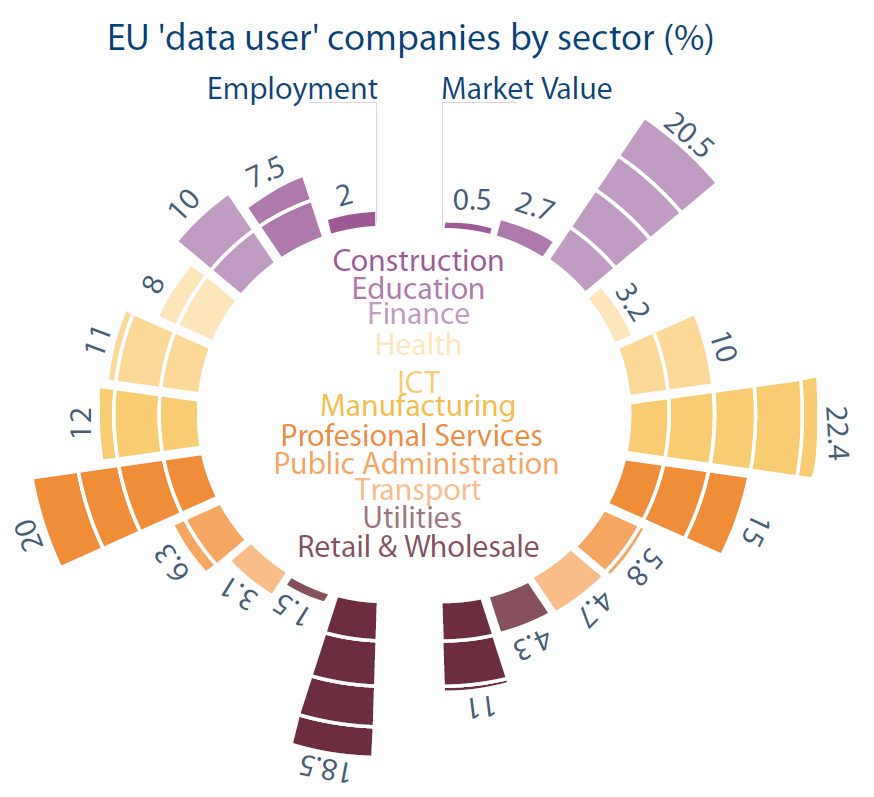Written by Clare Ferguson,
In 2016 we all became more aware of the enormous quantities of data we generate in our daily working and private lives, and the uses to which this data can be put. Analysis of ‘big data’ generated by economic and social activities can be used to improve processes or predict human behaviour. This can in turn be put to use to provide new products and services and other innovations in a wide range of sectors. The size of the data market value can be estimated based on contributions from business analytics and system infrastructure software, IT hardware and IT services across eleven sectors: construction, education, finance, health, ICT, manufacturing, professional services, public administration, transport, utilities, retail and wholesale.
See our best visuals from 2016
While big data analytics could increase Europe’s GDP by 1.9 % between 2014 and 2020, gathering the information is not without challenge for policy-makers. ‘Data ownership’, access to data, and the lack of a skilled workforce must be overcome before the full benefits of big data will be felt in the EU. In addition, citizens are wary of the handling of data on the grounds of privacy and protection issues, and policy-makers wish to avoid exacerbating the digital divide between those with access to the advantages of information technology and those who do not.









Be the first to write a comment.